From Gargoyles to Angels to Automobiles: The Preservation Progression of Dr. Tutt
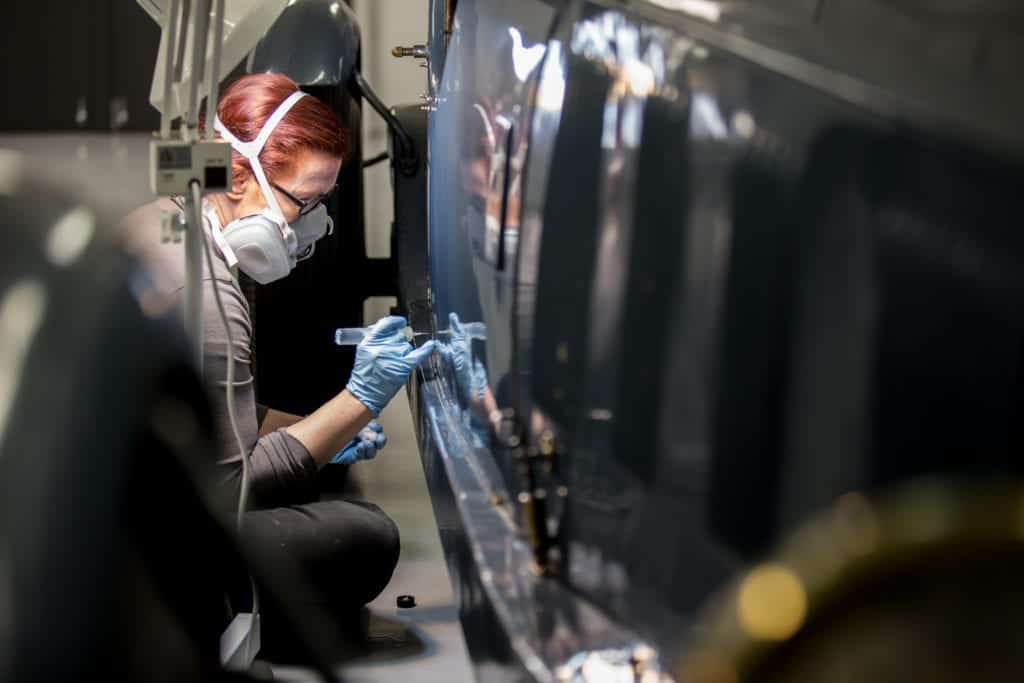
First she started with gargoyles. Then she moved onward, and upward, to angels. Finally she shifted her focus to objects less celestial but, in the eyes of enthusiasts, heavenly nonetheless: classic automobiles.
“I don’t do churches or art projects anymore,” says Gundula Tutt. “For the last six years I have worked only on cars.” That makes her an automotive enthusiast, but this woman from south Germany (whose name is pronounced “toot”) is an odd specimen of the breed.
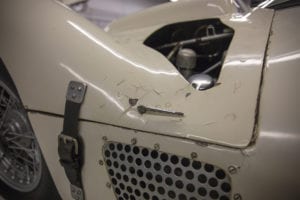
Most car enthusiasts focus on engines or styling. Tutt’s passion is, well, paint. Preferably old paint that’s chipped or cracked or discolored by time, wear and tear. Instead of repainting old surfaces (God forbid!) or even restoring the old paint to its original shiny condition, she conserves it. That involves fixing the blemishes in place with chemicals so noxious that she sometimes wears protective masks that make her look like one of the gargoyles she encountered early in her conservator career.
Tutt practices her craft for private car collectors and automotive museums in Europe and America who value preservation over prettification. To develop her techniques, she got a doctorate degree in the history of automotive paint (yes, really). “But I am more of a conservator than an artist,” she explains. “I can’t paint or draw like an artist does.”
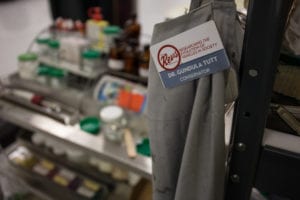
Tutt’s road to this unusual, perhaps unique, career started by happenstance. After getting her undergraduate degree she started a freelance business in art conservation, working mostly on medieval Catholic churches in southern Germany. The Catholic churches from that era had more gargoyles and other ornamentation than their austere Protestant counterparts. But the statues often suffered from the wear of time: air pollution, bird droppings, etc.
In 2002 she began restoring statues on a church in Freiburg, in Germany’s far southwest, with a colleague who owned two classic cars: a 1900 Renault Type C and a Type 37 Bugatti. “I never had anything to do with cars before,” Tutt recalls. “I had the typical girl’s education: crafts and crochet, nothing with motors or metals.”

But being exposed to those two cars got her interested in how she might apply and adapt her church-conservation techniques to automobiles. She worked both on her colleague’s Renault — which now sits in the Louwman Museum in The Hague, Netherlands — and his Bugatti. In 2009 she decided to study for a doctorate degree in automotive paint.
This was a course of study not found in any college catalogue, so she had to design her curriculum and, most importantly, find a faculty sponsor. The professors she approached were skeptical, not surprisingly. But Tutt discovered that Pablo Picasso, in his starving-artist days, had used automotive paint for some of his early works. That helped convince a professor at the Staatliche Akademie der Bildenden Künste (State Academy of Art) in Stuttgart to oversee her course of study, which took five years.
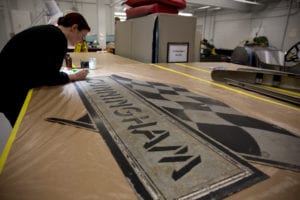
Her doctoral dissertation was titled: “History, Development, Materials and Application of Motor Vehicle Painting between 1900 and 1945.” She pursued her studies while continuing to accept church-renovation assignments to pay the bills, along with any auto-restoration work she could find. “It was all in a kind of caffeine fog,” she recalls. “But if you are highly motivated, things can be possible.”
Along the way she discovered that many powder pigments mixed with base-coat fluids would produce lumpy finishes and gum up spray guns. She built her own paint mill and mixing device. She learned how to do factory research to find hard-to-match original pigments, and to mix them properly into the same nitrocellulose lacquers (“nitro paint,” she calls them) originally used on cars from the 1930s. Putting modern paint onto those cars, even if properly tinted, can produce an unwanted bluish shimmer or pinholes in the finish, Tutt found. Most of the cars she conserves, far from being just static museum exhibits, are still driveable so they can be viewed as they were intended to be used.
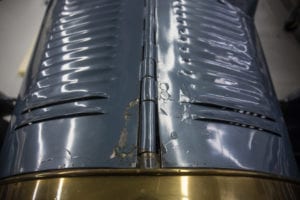
For leather restoration, she chanced upon a family-owned specialty-leather shop in Turin, Italy. The language barrier made contacting the shop impossible, until she found an Australian daughter-in-law who helps with the business and who, like Tutt, speaks English.
On a recent visit to Revs Institute in Naples Fl., Tutt worked on paint restoration for the Collier Collection’s Tipo 60 “Birdcage” Maserati the 1952 Cunningham C-4RK and an original 1960s Targa Florio road sign from Sicily. Preserving chipped paint required using a hypodermic needle to inject a special adhesive under the chips and fix them in place.

To protect herself from the fumes and any accidental contact with the adhesive, she donned full battle gear of gloves and air-filtration mask. She also worked on leather preservation for the collection’s 1939 Bentley with its James Young coachwork. “Gundula’s passion and her uniquely developed skills fill a valuable void in our collection-care scheme,” says Scott George, vice president of Revs. “To utilize museum best practices, performed by a master who has perfected her craft but remains so engaged in learning and improving her knowledge is just about all one can ask for.”